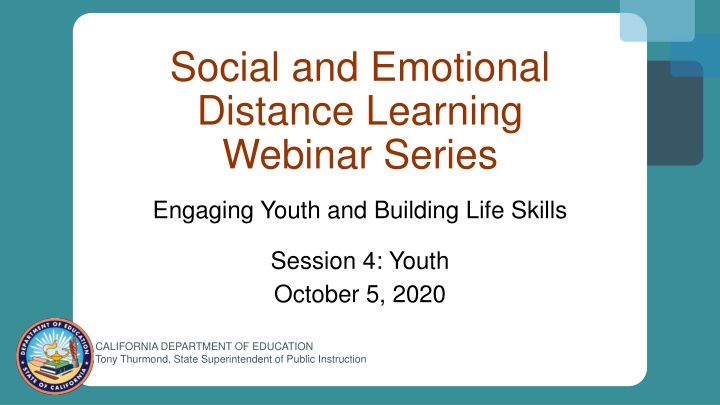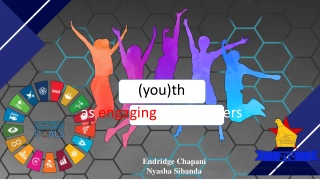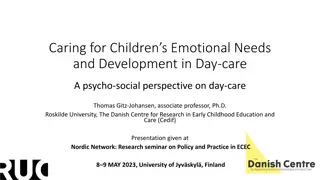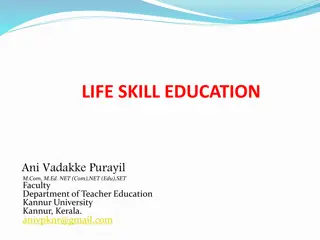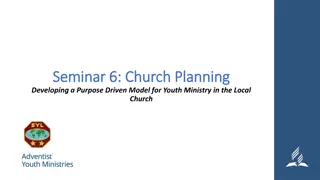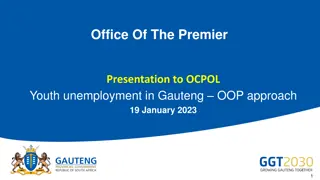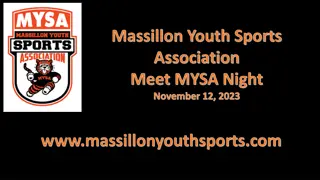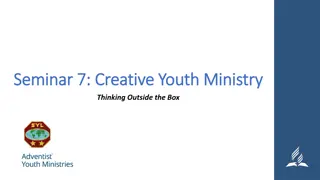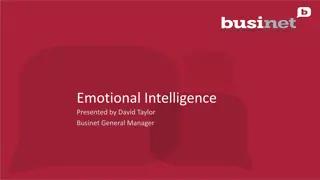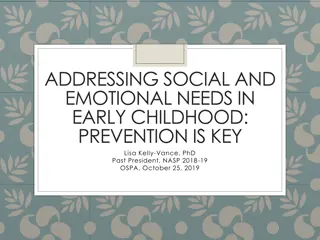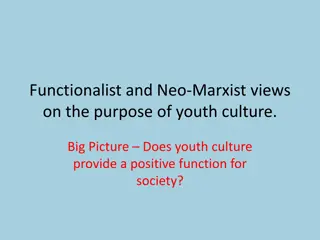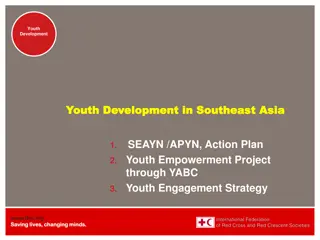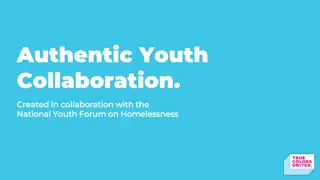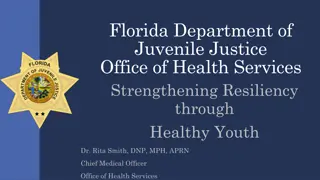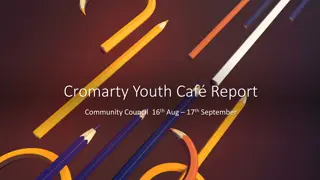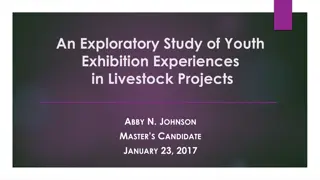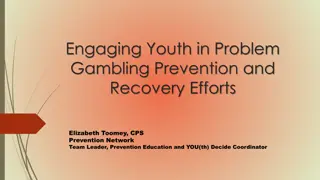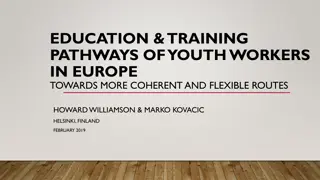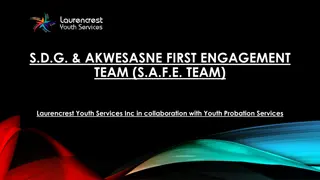Social and Emotional Learning Webinar: Engaging Youth and Building Life Skills
In this webinar series presented by the California Department of Education, State Superintendent Tony Thurmond introduces Social and Emotional Learning (SEL) concepts. Featuring guest speakers and interactive activities, the session focuses on providing skills, strategies, and creative methods for practicing SEL at home. Participants engage in mindful exercises, discussions on adolescent psychology by Dr. Daniel Siegel, and explore creative SEL strategies to enhance personal growth and well-being.
Download Presentation

Please find below an Image/Link to download the presentation.
The content on the website is provided AS IS for your information and personal use only. It may not be sold, licensed, or shared on other websites without obtaining consent from the author.If you encounter any issues during the download, it is possible that the publisher has removed the file from their server.
You are allowed to download the files provided on this website for personal or commercial use, subject to the condition that they are used lawfully. All files are the property of their respective owners.
The content on the website is provided AS IS for your information and personal use only. It may not be sold, licensed, or shared on other websites without obtaining consent from the author.
E N D
Presentation Transcript
Social and Emotional Distance Learning Webinar Series Engaging Youth and Building Life Skills Session 4: Youth October 5, 2020 CALIFORNIA DEPARTMENT OF EDUCATION Tony Thurmond, State Superintendent of Public Instruction
Housekeeping: Using Zoom Please keep your microphone muted unless otherwise directed. Click the ^ next to the microphone icon to start or change your audio connection. The chat will open a chat window on the right side of the screen. Post questions in the chat window and the speaker will address them when possible.
Welcome 3
Introductions Erika St. Andre Julia Agostinelli
Guest Speakers Aaron Bryan Tony Sanders Michael Gray
Agenda Welcoming Ritual Self-Care Activity Engaging Practice: What is Social and Emotional Learning (SEL)? Questions and Answers
Todays Outcomes Today, we will: Introduce/review what is meant by SEL Provide skills and strategies to practice SEL at home Experience creative SEL Strategies
Welcoming Ritual Mindful Minute Exercise: Hinges
Dr. Daniel Siegel Author, and leading expert in pediatric, child, adolescent, and adult psychiatry. The major innovations in art, music, technology and science come from adolescent minds.
Creative Social and Emotional Strategy (1) My Name, My Identity
Creative Social and Emotional Strategy (2) My Name, My Identity What s your name story? Step 1: Write your name Step 2: Add 5 to 7 images, icons, or words around your name that help to tell your name story. Share: Breakout rooms (4 minutes)
Breakout Activity: Interaction Flow The host of the webinar will invite you to join a Breakout Room. When the Breakout Room session is over, you will return to the Main Room.
Breakout Room Assignment The host of the webinar will invite you to join a Breakout Room. Click on the Join Breakout Room button to join.
Breakout Room Navigation Once you have joined a Breakout Room, you can click on the ? Ask for Help button if you need assistance, or click on the Leave Breakout Room if you want to leave.
Whole Group Share What are you taking away from your group discussion? Why do you think that our names, for some of us, are closely tied to our identity? How did adding words or images to your name help tell more about you? How do you feel after doing this activity?
Brain Stem Develops first Controls essential physiological functions, tasks, systems, etc. Information superhighway
Limbic System Emotional centers Threat perception Memory Attachment relationships
Prefrontal Cortex Planning Self-awareness Empathy Flexibility Adaptation Self-regulation
Mindfulness Awareness of one s breath Awareness of physical sensation
Michael Gray Long Beach Poly High School
Elevate Mental Wellness Skills Equal to Academics
Closed Heart We think if we close off our heart because of things like racism, anti LGBTQ policies, money challenges, relationships, a place to stay, family, and sexism, we won't feel fear, hurt, pain, or sadness. Not true! When we close off our heart, pain, etc will still find us and we will miss out on joy, happiness, and fun!!
Change *Why is it so hard to make changes? *How can you make change happen? *What are a few things to work on? https://youtu.be/PLYuHS-U_4o
Why Is it so Hard to Change? Why is it so hard to change? Our habits have been building since our 3rd trimester of birth. Our habit mind is super powerful. Daily build mental wellness skills just like you did with times tables. Do this schoolwide every day. Support each other. You are all learning the skills together. Watch, do, teach.
The Fears I Do Not Climb Become My Walls https://www.youtube.com/watch?v=V8Iz7Zu XZL4&feature=emb_logo
Lastly When you mess up learn from it. When something is difficult, learn from it. Don t try hard only on what you are good at. Try hard on what you aren t good at. Fail (and learn) your way to greatness and significance.
Five Skills to Use Daily for Just a Couple of Minutes 1. Stop Speaking Negatively Out Loud 2. The Power of Living in Gratitude 3. Accurate Thinking 4. Exercise 5. Breath Work
Time to Do the Power of Living in Gratitude Exercise 1. Take a moment and visualize someone in your life that had a positive impact on your life and is still living. 2. Write them a short note of gratitude. 2 minutes.
Accurate Thinking https://youtu.be/n5JQIUfLaoc
Mind/Body/Spirit U.S. National Library of Medicine, National Institutes of Health The following slide has a detailed description of the graphic.
Mind/Body/Spirit/Source of Strength Connection First point of triangle: Spirit, source of strength, community, inspiration, motivation. Second point of triangle: Mind, gain knowledge, breath work, meditation, morning/evening routine. Third point of triangle: Body, hydration, nutrition, exercise, sleep. Stronger 2gether = mind/body/spirit being fed every day. Everyday Equally No exceptions.
The Most Important Skills Self Awareness Empathy Mental Balance Building Community Integrity Flexibility Resiliency/Don t Give Up
Social and Emotional Distance Learning Web Page http://www.cde.ca.gov/ci/se/seldistance.asp Resources for teachers, school leaders, parents, and students
Educator Excellence and Equity Division Communications Facebook California Department of Education SEL Twitter @CDE_SEL
